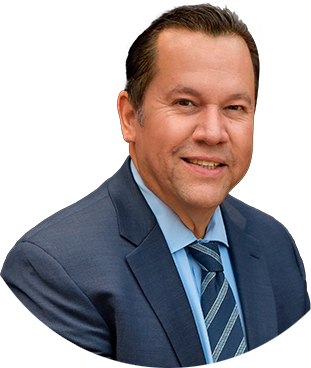While it is generally legal to construct and use a hidden compartment to store valuable items and other stuff, using secret compartments is unlawful when used in an auto to conceal controlled substances. Legally, this act is known as concealing drugs in a false compartment. This blog explains what the act entails and the repercussions you may face if found engaging in it.
What Concealing Drugs in a False Compartment Means
Concealing drugs in a false compartment is a drug-related criminal offense in California that can result in significant penalties if convicted. It entails using any false compartment to hide narcotics. This crime is defined under Health and Safety Code (HSC) 11366.8, and you commit it when you control, use, or possess a false compartment intending to transport, smuggle, conceal, or store drugs inside it. HSC 11366.8 also makes it an offense to attach, construct, install, alter, fabricate, build, or design, a false compartment on a motor vehicle intending to transport, smuggle, conceal, or store a drug or drugs in it.
How HSC 11366.8 Defines a False Compartment
False compartments are any enclosures, spaces, containers, or boxes designed to or intended for hiding any controlled substance inside. A false compartment could also be an altered or modified piece installed or attached to the original equipment of an auto that is from the original manufacturer. Or it could be a box, space, or compartment created to, added to, or made on existing parts of a component to be installed to hide, conceal, or prevent someone from discovering controlled substances in a motor vehicle.
A motor vehicle could either be for commercial or private purposes. Examples of prevalent vehicles include yachts, ships, boats, aircraft, buses, trucks, cars, or vessels that could be used for either private or commercial use.
What Does Control and Possession Mean Under HSC 11366.8?
We have two kinds of possession defined under HSC 11366.8. These are constructive and active possessions. Active possession means a physical and personal retainment, while constructive possession means control by direction and authorization for which possession can be assessed.
Per HSC 11366.8, the vehicle's driver would be inactive possession of the controlled substances— having the access button that activates the compartment, managing the handling of the false compartment, or installing or placing the false compartment themselves. On the other hand, constructive possession would be demonstrated by either the motorist or the motorist's agent, such as a relative, associate, colleague, or installation company managing the handling of the compartment or installing or placing the false compartment by authorization or by payment because of supervision of association or employment.
The Required Mental State for an HSC 11366.8 Violation Charge to Hold
The required mental state for an HSC 11366.8 violation charge to hold is ‘knowingly.’ Knowingly refers to the purposeful intention to do something. It is a conscious understanding of the facts or circumstances needed to accomplish the results, with the objective acceptance of the probable and natural repercussions associated with the desired results.
As used under HSC 11366.8, you must have specifically intended to install, fabricate, build, or create the false compartment in an auto and plan to use it to control, possess, store, smuggle, or transport controlled substances. And you must be aware of the probable and natural consequences that might arise from your decision.
The drugs or controlled substances being referred to under HS 11366.8 include:
- Opium,
- Mushrooms,
- Ecstasy,
- Psilocybin,
- Fentanyl,
- Methamphetamine,
- Peyote,
- GHB,
- Mescaline,
- Opium extracts like CO2 base and derivatives such as crumbles,
- Ketamine,
- Phencyclidine (PCP),
- Cocaine,
- Heroin, and
- Testosterone drugs.
Concealing Drugs in a False Compartment Attracts Harsh Penalties
Per California law, concealing controlled substances in a false compartment is a wobbler criminal offense, which means the prosecution can try the offense either as a misdemeanor charge or felony. If the judge finds you guilty of controlling, using or possessing a false compartment intending to transport, smuggle, conceal, or store drugs inside it under HS 11366.8(a), they may pronounce a misdemeanor sentence of a one-year jail term and one thousand dollars in fines.
And if they find you guilty of attaching, installing, altering, building, or designing a compartment on a motor vehicle intending to transport, smuggle, conceal, or store a drug or drugs in it under HS 11366.8(b), you may be subject to a felony sentence of three or two years, or sixteen months in prison and a fine that does not exceed ten thousand dollars.
Instead of a jail term, the judge may sentence you to summary probation, also called misdemeanor or informal probation. When the judge sentences you to misdemeanor probation, they will require you to comply with various conditions. These conditions may include the requirement to:
- Participate in group or individual therapy.
- Complete Caltrans roadside work or community service.
- Enroll in drug abuse-related programs.
- Seek gainful employment.
- Abstain from drug use.
- Appear on all court dates.
- Agree to random drug testing.
- Not break any other law.
If you violate any condition of probation the judge imposed, they may revoke your probation sentence and order you to serve the original incarceration period for your crime. Alternatively, the judge may impose harsher probation conditions.
Note that if you prefer serving a jail sentence and be done with it instead of complying with the probation conditions for several months, you can reject probation if the judge imposes. The judge will not force alternative sentencing on you if you do not want it. Your lawyer can assist you in deciding whether it is sensible to reject an alternative sentencing offer.
And if you are required to serve an actual jail term, the sentence could be suspended or split with the court’s permission. A suspended sentence refers to a sentence that is not served unless the accused violates any condition of their out-of-incarceration sentence. On the other hand, a split sentence refers to a sentence served partly in custody and partly out of jail on house arrest or work release.
According to the three-strikes law, violating HSC 11366.8 is not deemed a strike. However, violating this law is considered an offense involving moral turpitude. Therefore, if you are found guilty of possessing any false compartment or concealing drugs in the said compartment, you will be subject to adverse immigration consequences such as removal (deportation) and inadmissibility. You may also face professional licensing repercussions and have your credibility impeached in future prosecutions.
Apart from any possible prison or jail sentence, probation, or fines, you may be subject to other penalties if you are convicted of possessing a false compartment to hide controlled substances in it. These penalties may include forfeiture of your vehicle, loss of your right to own a firearm, vote, serve on a jury (for a felony HSC 11366.8 conviction), denial of admission to the military, parole terms, and more.
There Are Several Defenses to This Crime
If you are accused of concealing controlled substances in any false compartment, you can fight the charges against you by arguing various legal defenses. A solid defense can usually have charges reduced or dismissed altogether. However, it is worth noting that you want to hire a skilled criminal lawyer to help build an effective defense strategy that will achieve the best possible results. Common legal defenses to the charges of concealing drugs in a false compartment are:
Police Entrapment
Suspects are usually arrested and charged after undercover sting operations in most cases involving false compartments and controlled substances. However, a judge must dismiss any charge under Health and Safety Code 11366.8 if a police officer lured the accused into doing the criminal conduct. The ‘’luring” is referred to as entrapment. Entrapment applies to domineering official activity on the police officers’ part, such as threats, flattery, fraud, harassment, or pressure. Entrapment is a valid legal defense to HSC 11366.8 violation as long as you prove you only concealed drugs in a false compartment due to the entrapment.
Coerced Confession
The defense of coerced confession applies to a case where you were charged with violating HS 11366.8 after a confession. The state’s law provides that law enforcement officers may not apply oppressive measures to force a confession out of a suspect. If you, with help from your lawyer, can prove that the arresting officer coerced you into confessing, the judge might strike off your confession from the prosecution’s evidence or dismiss the case altogether if you were pressured into admitting to an offense you did not commit.
No Intent
Remember that one of the elements the prosecutor must prove for you to be convicted under HS 11366.8 is intent. You are only guilty of violating this law if you acted with the requisite intent to transport, smuggle, conceal, or store a drug. Therefore, you can argue that you did not attach, use, or make the false compartment with this specific intent as a defense. For instance, perhaps you merely made the compartment conceal money or other valuable stuff.
Illegal Search and Seizure
Most false compartment charges rely on statements from untrue witnesses who allege the accused is aware of the false compartment in their vehicle. Consequently, the police officers will at times depend on the uncredible informant to support their warrant to search your vehicle and seize whatever they find there. If the police officers searched your vehicle or property based on unsubstantiated rumors, you could argue the defense of illegal search & seizure based on the defective application of the warrant. Under the same argument, you could also assert that the police had no probable cause to discover the compartment and search it.
The U.S constitution prohibits law enforcement officers from searching properties and seizing items without a validity-issued search warrant. If your lawyer files the motion to suppress, the judge may suppress illegally obtained evidence. If the jury does not see the proof, you cannot be found guilty of violating HSC 11366.8.
Lack of Ownership
It could be that someone else had already installed the false compartment in the motor vehicle you bought as used, and you did not know the compartment was there, nor did you have access to or control of it.
Misidentification or Inaccurate Crime Laboratory Analysis
Some kinds of non-controlled substances can look like narcotics in appearance. For example, any white powder may look like cocaine. The prosecution must prove that the stuff they found is undoubtedly a controlled drug or a narcotic. One of the ways they could do this is by conducting a professional lab analysis. A crime laboratory analyst has to testify to the laboratory results to substantiate the controlled substance's nature at the court trial. If they made a mistake in their analysis and the stuff is not a narcotic, or the analyst does not give their testimony at trial, the judge may dismiss the case against you.
The Drugs Never Existed or Are Lost
Without physical evidence of the controlled substance, the prosecutor’s case against you will generally be on shaky ground. A skilled defense attorney will compel the prosecutor to produce the supposed controlled substance. It is upon the prosecution’s team to keep track of the drugs assumed to form the proof of the case against you. If it does not, you could have a better chance of having the charges against you dropped, or your lawyer may defend against them with significant success.
You Can Be Charged With Another Crime Instead of or Alongside an HSC 11366.8 Violation
The crime of concealing drugs in a false compartment is related to various crimes under California law because it shares particular elements with those offenses. Therefore, instead of being charged with an HSC violation, the prosecutor may opt to charge you with another crime. This could be because they cannot prove all the elements required for a conviction under HSC 11366.8, or your criminal conduct has additional facts that qualify it to be charged under a different law. Or, in addition to an HSC 11366.8 violation, the prosecutor may charge you with the related crime. Crimes related to concealing drugs in a false compartment are:
- HSC 11379.6, manufacturing a controlled substance.
- HSC 11366, operating a drug house.
- HSC 11351, possession of a controlled substance for sale.
HSC 11366, Operating a Drug House
HSC 11366 makes it an offense to run a drug house. Under this law, a drug house means a place opened and maintained to give away or sell illegal drugs illegally. The prosecution must prove these elements to show you are guilty of violating HSC 11366:
- You maintained or opened a place.
- With the requisite intent to give away, sell, or permit other parties to use narcotics or controlled substances repeatedly or continuously at that particular place.
Violating HSC 11366 is considered a wobbler crime. If convicted of a misdemeanor, you will be subject to a year in jail and one thousand dollars in fines. And if found guilty of a felony, you will face a maximum fine of ten thousand dollars and three or two years or sixteen months in prison.
HSC 11351, Possession of a Controlled Substance for Sale
California HSC 11351 criminalizes the possession of given controlled substances for sale. These substances include narcotics such as LSD, heroin, and cocaine. HSC 11351 also criminalizes the possession of various prescription drugs and intending to sell them, including Oxycontin (oxycodone), codeine, and hydrocodone (Vicodin).
The prosecution must prove these elements for the judge to convict you of possessing a controlled substance for sale:
- You knowingly purchased or owned a controlled substance.
- You knew the drug was a controlled substance.
- You had enough of the controlled substance to sell or use.
- You either purchased the controlled substance intending to resell it or possessed the drug aiming to sell it.
Violating HSC 11351 is a felony offense punishable by four, three, or two years in prison upon a conviction. The judge may also require you to pay a maximum fine of twenty thousand dollars.
HSC 11379.6, Manufacturing a Controlled Substance
HSC 11379.6 criminalizes the illegal manufacturing of controlled substances, narcotics, or drugs. More specifically, this Health and Safety Code prohibits manufacturing, converting, compounding, deriving, producing, preparing, processing, or proposing to participate in these activities regarding any narcotic specified under HSC 11054 to HSC 11058.
If caught breaking HSC 11379.6 law, you will be subject to felony charges punishable by seven, five, or three years in prison and up to $50,000 in fines.
Find a Los Angeles Criminal Attorney Near Me
If you have been charged with concealing drugs in a false compartment in violation of HSC 11366.8, reach out to a drug crimes criminal defense lawyer right away. At Los Angeles Criminal Lawyer, we boast criminal defense lawyers with decades of experience successfully defending against various drug crime cases. We provide initial consultations and case evaluations free of charge and are available 24/7 to serve you. Call us at 310-502-1314 to receive the legal help you need.
















